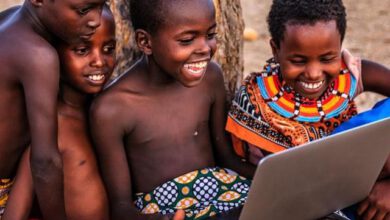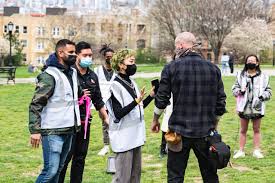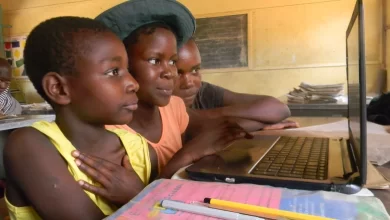Local Inventors Solving Real-Life Problems Across Africa
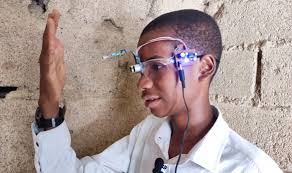
A few years ago, a young computer science student in my church built something remarkable. Inspired by his cousin’s blindness, Seyi created See-Tok, a smart glove that helps visually impaired people avoid obstacles using vibrations and voice alerts.
After a successful test at the Nigeria Training Centre for the Blind, his grassroots innovation took shape. Like many inventors across Africa, Seyi didn’t wait for change; he built it, one solution at a time, one life at a time.
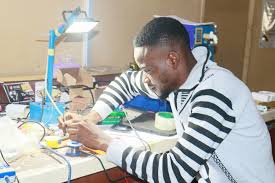
Seyi Ojelabi is the creator of See-Tok, a smart glove that helps the visually impaired detect obstacles.
From Shortage to Solution: Africa’s Grassroots Makers
According to the World Bank, over 490 million people in Sub-Saharan Africa lack access to electricity, and nearly 60% live in rural regions where infrastructure is weak or absent. Yet, in the face of these challenges, a powerful force is rising: innovation from the ground up.
Across the continent, inventors are designing solutions from scrap metal, recycled plastic, and repurposed electronics. They’re tackling hyper-local issues, clean water access, off-grid energy, healthcare delivery, waste management, not with imported systems, but with context-specific inventions born from daily lived experiences.
Unlike top-down aid models that often fall short, grassroots innovation reflects the realities of the communities it aims to serve. “There is a tremendous amount of innovation happening in Africa; entrepreneurs are making a real impact using science and technology to solve healthcare challenges,” says Seema Kumar, Vice President of Innovation at Johnson & Johnson. The Africa Innovation Challenge is about finding, supporting, and championing promising solutions while strengthening the innovation ecosystem across Africa.
From a mobile-based hearing test to malaria-fighting soap, these ideas aren’t just clever, they’re life-saving.
And at the heart of them are people like Seyi Ojelabi, who turn everyday struggles into devices like See-Tok, showing that some of the world’s most powerful innovations begin where resources are scarce but imagination is rich.
From Pain to Purpose: The Inventors Healing Africa’s Communities
Two days after giving birth, Virtue Oboro noticed something was not right. Her newborn son was lethargic, his eyes and skin tinged yellow. Diagnosed with severe neonatal jaundice, he needed urgent treatment.
But like many hospitals in Nigeria, they lack phototherapy equipment and she request for an emergency blood transfusion instead and her baby survived. Every year, nearly 3.3 million babies in sub-Saharan Africa do not get adequate jaundice care. Many suffer hearing loss, brain damage, or worse.
So, she created Crib A’Glow, a foldable, solar-powered phototherapy crib using LED light. Built for hospitals in rural Nigeria with unreliable electricity, the device has already helped over 600 babies heal safely.
She also rents the cribs directly to mothers and is building a mobile app to help streamline delivery and reach more families. What began as one mother nightmare has now become hundreds of hope to thousands of people.
In Uganda, 22-year-old Brian Turyabagye saw the danger in how pneumonia is often diagnosed too late leading to countless child deaths. His solution? An AI-powered biomedical jacket that detects pneumonia earlier and more accurately than traditional stethoscopes, potentially saving thousands of young lives.
And also in Ghana, Richard Kwarteng and his brother went viral during the COVID-19 pandemic for creating a sensor-based handwashing station using basic electronics and locally sourced tools. At a time when public hygiene was critical, their innovation filled a crucial gap where government infrastructure didn’t reach.
Then there’s Mashudu Tshifularo from South Africa, who was once told by a teacher that he was “not smart enough to be a doctor.” Four decades later, he made global headlines for performing the world’s first 3D-printed middle-ear transplant, restoring hearing to a man who survived a car crash.
In Kenya, grassroots innovation is tackling both security and sustainability.
Edwin Inganji, who survived a brutal robbery in 2014, knew firsthand how broken emergency services were. “When you call 999, it doesn’t go through to anyone,” he said.
His response? Usalama, a mobile app that sends distress signals to family, friends, and emergency responders with just a shake of the phone. In a country where 88% of people have mobile access, Edwin’s solution is already saving lives. And for those without smartphones, he’s built in an SMS alert system too.

While Edwin addressed security, Alex Makalliwa looked to climate. From a dusty workshop in Kisumu, Kenya, he is working to convert gas-powered tuk-tuks into electric vehicles.
I live in an environment with real problems, Alex said. So it falls on me to push a real solution. These innovators are just a few of the many rewriting what’s possible in Africa.
Additionally, in Malawi, William Kamkwamba built a working windmill from scrap to power his village, a story that later inspired the Netflix film The Boy Who Harnessed the Wind. These devices are imagined, tested, and refined within the communities they’re meant to serve.
They use local materials, speak the local language, and solve hyper-local problems. Starting from neighbors acting as testers to word-of-mouth spreading faster than any ad campaign, these innovations thrive because the people who use them believe in them.
Summary
Innovation isn’t just happening in big labs or tech companies anymore. But rather from community garages, roadside stalls, and school workshops, powered by purpose and raw ingenuity. These grassroots inventors are not waiting for global attention.
From life-saving devices to that provide solutions, their work reminds us that meaningful innovation does not always start with millions. Sometimes it starts with a single idea and the courage to build.


